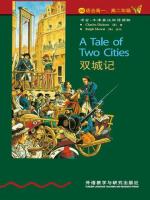童话讲述人生哲理
Charles Dickens' "A Tale of Two Cities" is a masterpiece that stands as one of his most important representative works. Set against the backdrop of the French Revolution, the novel profoundly exposes the societal contradictions of the era, intensely criticizes the dissolute and cruel aristocratic class, and sincerely sympathizes with the oppressed classes.
The story revolves around the experiences of Doctor Manette, who witnesses the brutal actions of the Evremonde brothers, leading to his imprisonment in the Bastille for eighteen years. Upon his release, he is cared for by the Defarges, who nurse him back to health. The narrative then intertwines with the lives of Lucie Manette, Charles Darnay, and Sydney Carton, as they navigate through a web of love, revenge, and injustice.
Dickens' portrayal of characters is nothing short of remarkable. Doctor Manette, once a vibrant and intelligent young man, is reduced to a shell of his former self after years of torture and imprisonment. His resilience and eventual recovery symbolize the human spirit's ability to endure and overcome adversity. Lucie, on the other hand, embodies the virtues of beauty, gentleness, and unwavering loyalty to her loved ones. Charles Darnay, despite being the son of a cruel nobleman, rebels against his family's legacy and chooses a path of compassion and self-reliance.
Sydney Carton, initially portrayed as a lazy and dissipated man, undergoes a transformation that is both shocking and inspiring. His unrequited love for Lucie leads him to make the ultimate sacrifice, willing to die in place of Charles to ensure the happiness and safety of Lucie and her family. This act of selflessness highlights the novel's theme of love triumphing over hate.
The Defarges, particularly Madame Defarge, represent the vengeful spirit of the revolution. Her relentless pursuit of justice, driven by a personal vendetta, makes her a chilling figure. Her knitting, a constant companion, symbolizes her meticulous planning and cold determination. The Evremonde brothers, cruel and sinister, serve as the embodiment of the oppressive aristocracy, their actions driving the narrative towards its tragic conclusion.
Dickens' mastery of language and rhetorical techniques is evident throughout the novel. He employs analogy, exaggeration, contrast, humor, and sarcasm to create a rich and vivid tapestry of the era. The novel's structure is intricate, with multiple plotlines interweaving to create a sense of tension and drama. Dickens uses foreshadowing and narrative techniques to build suspense and ensure the plot's coherence.
The novel's style is solemn and melancholic, filled with indignation towards the injustices of the time. It lacks the humor of Dickens' earlier works, reflecting the gravity of the subject matter. The themes of love, hate, revenge, and sacrifice are explored in depth, creating a powerful and emotional narrative.
"A Tale of Two Cities" is not just a historical novel; it is a work of literary genius. Dickens' ability to bring the era to life, through his vivid descriptions and well-crafted characters, makes the novel a compelling read. The novel serves as a reminder of the dangers of injustice and the power of love and compassion to overcome even the darkest times.
In conclusion, "A Tale of Two Cities" is a must-read for anyone interested in literature, history, or the human condition. Dickens' masterful storytelling and deep understanding of the human psyche make this novel a timeless classic that will continue to inspire and captivate readers for generations to come.



 京公网安备 11010802032529号
京公网安备 11010802032529号